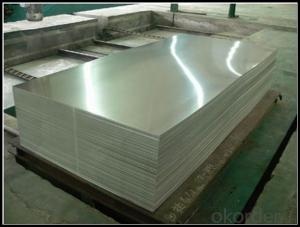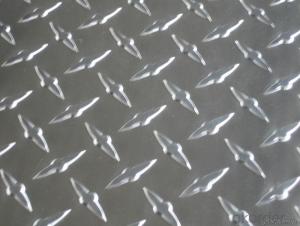Diamond Plate Aluminum Red Sheets for Metal Wall Systems
- Loading Port:
- Shanghai
- Payment Terms:
- TT OR LC
- Min Order Qty:
- 5 m.t.
- Supply Capability:
- 100000 m.t./month
OKorder Service Pledge
OKorder Financial Service
You Might Also Like
Specification
1.Structure of Aluminum Sheets with Corrugated Aluminum Sheet For Metal Wall Systems
Aluminum Sheets are strengthened and cut from raw materials with different alloys, such as AA5005, AA5052, etc. They are easy for processing in different shapes, good in intensity and can be quickly installed. Aluminium Sheets for Energy Saving Curtain Walls are good in energy saving, weather resistance, fire resistance, easy for maintenance and with many colors.
Aluminium Sheets for Energy Saving Curtain Walls are widely used in construction of metal walls, metal ceilings, car decoration, advertizing panels, etc.
2.Main Features of Corrugated Aluminum Sheet For Metal Wall Systems
•High intensity
•Easy to be processed and shaped
•Weather resistance
•Anti-pollution & environment protection
3. Aluminum Sheets with Corrugated Aluminum Sheet For Metal Wall Systems
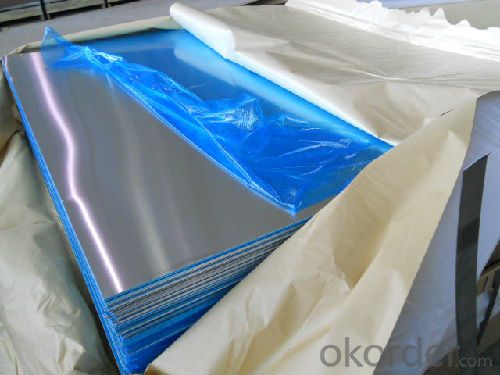
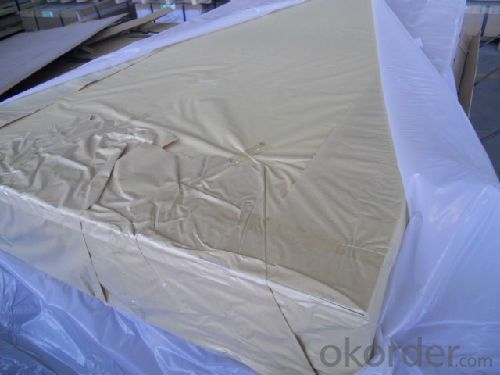
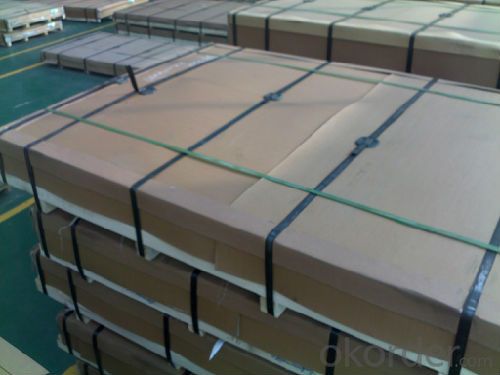
4.Specification of Corrugated Aluminum Sheet For Metal Wall Systems
Alloy Number | AA5XXX |
Temper | H12, H14, H16, H18, H22, H24, H26, H32, HO, F |
Thickness | 0.1mm – 500mm |
Width | 10mm- 2200mm |
Standard | GB/T3880-2006, ASTM, ISO, EU standard |
5.FAQ
A.What about inspections to guarantee quality?
For each order for Aluminum Sheets with Mill Finished Surface AA5XXX, we will arrange strict inspection for raw materials, inspection during production and inspection for finished goods.
With requirement of customers, we also can arrange the third party inspection.
B.What about delivery?
We will put order for Aluminum Sheets with Mill Finished Surface AA5XXX in production schedule after order gets confirmed against copy of TT or L/C. Normally it takes about one month for production. Exact shipment schedule is different based on different sizes and quantity.
C.What is the MOQ?
5 tons for each size.
D. Where have you exported aluminium sheets?
We have exported aluminum sheets to many countries. Main markets include South East Asia, Middle East, North America, South America, etc.
- Q: Can aluminum sheets be used in outdoor environments?
- Indeed, aluminum sheets are capable of being utilized in outdoor settings. Aluminum, a material that is both highly adaptable and enduring, proves to be a fitting choice for outdoor uses. Its exceptional resistance to corrosion renders it well-equipped to endure environmental factors like rain, snow, and UV radiation. Moreover, aluminum sheets are characterized by their lightweight nature and structural robustness, rendering them appropriate for a multitude of outdoor endeavors, including roofing, siding, and cladding. Furthermore, aluminum's non-combustible nature makes it a secure option for outdoor environments. All in all, aluminum sheets offer a dependable and enduring solution for outdoor applications.
- Q: Are there any health risks associated with using aluminum sheets?
- There is ongoing debate and research regarding the potential health risks associated with using aluminum sheets. While aluminum is a common material used in various industries and products, it is important to consider certain factors. Exposure to high levels of aluminum, such as through inhalation or ingestion, has been linked to health issues. Studies suggest that aluminum exposure may be associated with neurological disorders, such as Alzheimer's disease or Parkinson's disease, as well as respiratory problems and bone disorders. However, it is important to note that these studies have not yet established a definitive causal relationship between aluminum and these health conditions. The primary concern with aluminum is its potential to leach into food or beverages when it comes into contact with acidic or salty substances. This leaching can occur during food preparation or storage, especially if using aluminum cookware or foil. Consuming high levels of aluminum through food or drink may pose health risks, particularly for individuals with kidney disease or those who have a higher susceptibility to aluminum toxicity. To mitigate potential health risks, it is recommended to avoid using aluminum cookware or foil when cooking or storing acidic or salty foods. Instead, consider using alternatives such as stainless steel, glass, or silicone. In conclusion, while there are concerns about the potential health risks associated with using aluminum sheets, more research is needed to establish a clear cause-and-effect relationship. It is prudent to minimize exposure to aluminum, especially through food and beverages, by adopting preventive measures and using alternative materials when appropriate. Consulting with health professionals and staying updated on the latest research can help individuals make informed decisions about using aluminum sheets and other aluminum products.
- Q: What are the advantages of using aluminum sheets in the packaging industry?
- There are several advantages of using aluminum sheets in the packaging industry. Firstly, aluminum is a lightweight material, making it ideal for packaging applications. It is significantly lighter than other packaging materials such as steel or glass, which makes it easier to handle and transport. The lightweight nature of aluminum sheets also helps reduce shipping costs, as less fuel is required to transport the packaging materials. Secondly, aluminum sheets offer excellent barrier properties. They provide an effective barrier against oxygen, moisture, and light, which are common elements that can deteriorate the quality and freshness of packaged products. This barrier helps extend the shelf life of the packaged goods, ensuring that they reach consumers in optimal condition. Additionally, aluminum sheets are highly durable and resistant to corrosion. This durability ensures that the packaged products remain protected, even in challenging environmental conditions. Aluminum sheets are also resistant to temperature variations, ensuring that the packaging material remains intact and does not warp or deform. Moreover, aluminum is a highly recyclable material. Using aluminum sheets in the packaging industry promotes sustainability and reduces the carbon footprint. Aluminum packaging can be easily recycled and reused, reducing the need for virgin materials and minimizing waste. Furthermore, aluminum sheets offer versatility in terms of design and customization. They can be easily formed and shaped into various packaging formats, such as cans, trays, foils, and pouches. This flexibility allows packaging manufacturers to create innovative and attractive packaging solutions that cater to the specific needs and preferences of different industries and consumers. Overall, the advantages of using aluminum sheets in the packaging industry include its lightweight nature, excellent barrier properties, durability, recyclability, and versatility. These benefits make aluminum sheets a preferred choice for packaging manufacturers, ensuring the protection, preservation, and appeal of packaged products.
- Q: This question asks about the various applications of aluminum sheets within the construction industry.
- <p>Aluminum sheets are widely used in construction for their durability, lightweight, and resistance to corrosion. They are commonly used for roofing and cladding due to their ability to withstand harsh weather conditions. Aluminum sheets are also used in the manufacturing of window frames and doors because of their strength and thermal insulation properties. Additionally, they are utilized in the construction of scaffolding and temporary structures due to their ease of assembly and disassembly. In interior design, aluminum sheets can be used for decorative purposes, such as wall panels and ceilings. Their recyclability also makes them an environmentally friendly choice for construction projects.</p>
- Q: Are aluminum sheets suitable for soundproofing applications?
- Aluminum sheets are not typically suitable for soundproofing applications as they have low mass and do not effectively block or absorb sound waves.
- Q: Are aluminum sheets suitable for outdoor signage?
- Yes, aluminum sheets are suitable for outdoor signage. They are durable, weather-resistant, and can withstand various environmental conditions such as rain, wind, and sunlight. Additionally, aluminum sheets can be easily customized, making them ideal for outdoor signage applications.
- Q: when aluminum metal undergoes a combination reaction with O2(g)
- Aluminium metal combines with the oxygen from the air on heating to form aluminium oxide. The reaction can be represented using a balanced equation as 4 Al (s) + 3O2(g) = 2Al2O3(s)
- Q: What is the weight per square foot of 101 aluminum sheets?
- The weight per square foot of 101 aluminum sheets can vary depending on the thickness of the sheets. Generally, the weight of aluminum is measured in pounds per square foot (lbs/ft²). To determine the exact weight per square foot of 101 aluminum sheets, you would need to know the thickness of each sheet. Once you have the thickness, you can use the density of aluminum, which is approximately 0.098 pounds per cubic inch (lbs/in³), to calculate the weight per square foot.
- Q: What is the yield strength of aluminum sheets?
- The yield strength of aluminum sheets may differ due to several factors, including the aluminum alloy, the tempering process, and the sheet thickness. Typically, aluminum sheets exhibit a yield strength that falls within the range of 10,000 psi (69 MPa) to 45,000 psi (310 MPa). Nonetheless, it is crucial to acknowledge that these values are only estimates and can fluctuate depending on the precise grade and temper of the aluminum in question.
- Q: Are aluminum sheets suitable for use in cryogenic environments?
- Yes, aluminum sheets are suitable for use in cryogenic environments. Aluminum has excellent thermal conductivity and low density, making it an ideal material for cryogenic applications. It can withstand extremely low temperatures without losing its structural integrity or experiencing significant thermal expansion. Additionally, aluminum has good corrosion resistance and can be easily fabricated into various shapes and sizes. These properties make aluminum sheets commonly used in cryogenic systems, such as cryostats, superconducting magnets, and liquid nitrogen storage tanks.
Send your message to us
Diamond Plate Aluminum Red Sheets for Metal Wall Systems
- Loading Port:
- Shanghai
- Payment Terms:
- TT OR LC
- Min Order Qty:
- 5 m.t.
- Supply Capability:
- 100000 m.t./month
OKorder Service Pledge
OKorder Financial Service
Similar products
Hot products
Hot Searches
Related keywords

